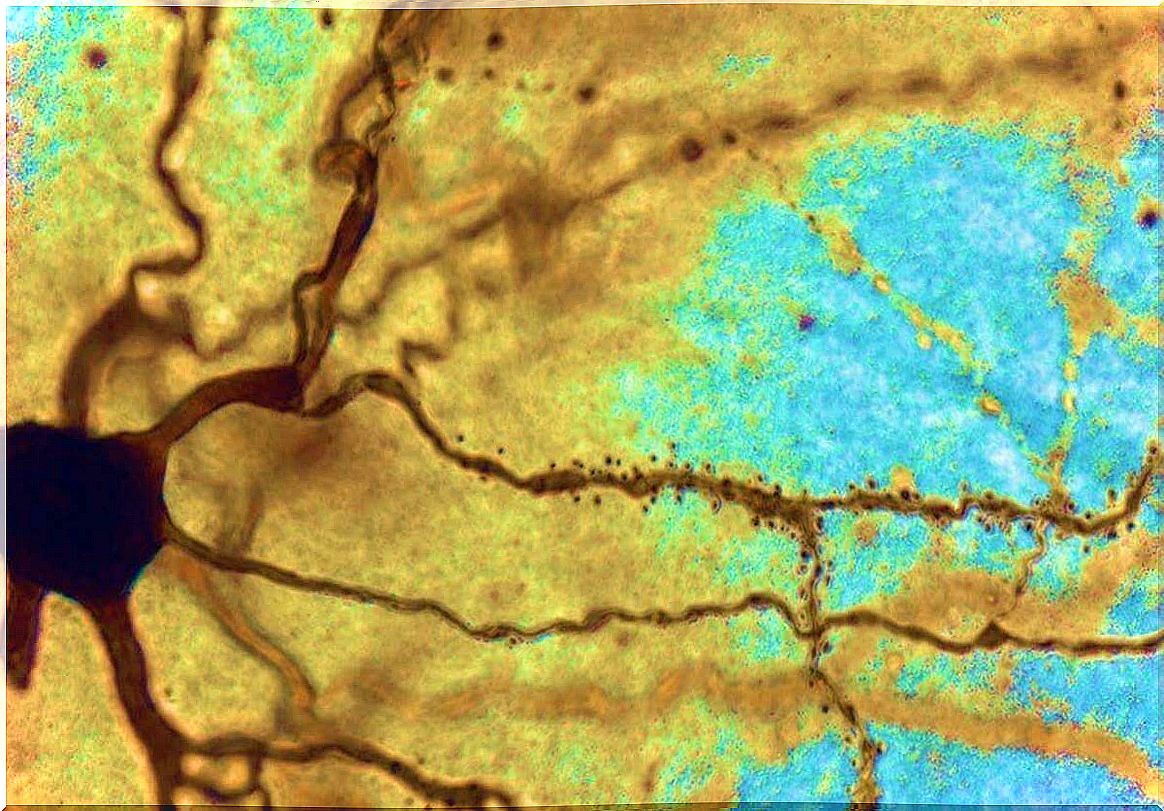Smart People’s Neurons Are Bigger

Is brain size related to IQ? So far this hypothesis has not been tested, but science has revealed a fact that is, to say the least, interesting. Now we know that smart people’s neurons are bigger. This facilitates the transmission of information faster and the flow of ideas faster.
These data, as curious as they may seem, continue to irritate a part of the academic community. Somehow, linking “volumes” with “intellectual performance” seems a bit reductionist and even simplistic. Because, in the end, intelligence is still too complex to assess and even define.
Despite that, the data is there. Scientists from the so-called Human Brain Project have discovered that there is a direct relationship between the size of brain cells and people’s level of cognitive competence. This also opens up new possibilities, such as pushing the limits of human intelligence in the laboratory.

According to science, the neurons of smart people are bigger
The study led by Dr Natalia Goriounova of the Free University of Amsterdam was the first to show that brain cell size is directly related to a person’s intelligence levels. Faced with greater density and connectivity, the intellectual potential is more significant.
Until today, we knew that the brain has about 100 billion neurons and that each one of them collects, processes and sends information thanks to a series of chemical reactions and electrical signals. We knew its mechanics, but we didn’t have solid data to link brain cell volume to cognitive performance.
We had, for example, data from the analysis of Albert Einstein’s brain, after pathologist Thomas Harvey stole it after his autopsy in 1955. This analysis revealed, among other data, that his prefrontal cortex is responsible for spatial cognition and thinking mathematical, was more developed.
Furthermore, the glial cells of the father of the theory of relativity were larger than average. So, somehow, we already had some small clues that anticipated these results…
Frontal cortex and temporal lobes: greater volume of neurons
The analyzes obtained in the work at the University of Amsterdam showed not only that the neurons of intelligent people are larger, but also indicated that the areas where most of the brain cells are found (prefrontal cortex and temporal lobes) also have a greater branching.
That is, they not only have a greater volume, but also greater connectivity with many more neurons around them. All of this sets up a brain with more synapses, where information flows more quickly. Likewise, as evidenced by Einstein’s brain, both the frontal cortex and the temporal lobes have greater density and size in smarter people.
Why are smart people’s neurons bigger?
Looking at this data, the question that comes to mind is obvious: Why are smart people’s neurons bigger? Is anything in particular designed to have above-average volume? Maybe something similar to muscle tissue? That is, the more you exercise it, the bigger it gets?
What the Human Brain Project points out is that this particularity responds to genetic factors and processes not yet fully understood. Something interesting that the Free University of Amsterdam did is to carry out a detailed analysis of each neuron in an active state, that is, still “alive”.
For this, a group of people who needed surgery due to a tumor or epileptic complications were studied. Before the intervention, they took an intelligence test to identify those with the greatest intellectual abilities. Later, during the intervention, small samples of the prefrontal cortex and temporal lobes were extracted.
What was seen, in addition to the larger size of the cells themselves, was a much larger action potential (the wave of electrical discharge that travels through the cell membrane, modifying it). Next, an attempt was made to understand what triggers the larger brain cells that appear in smarter people.
The results have not yet been published and we do not have completely conclusive data to date.

What implications does this discovery have for the future?
Are we born intelligent or have we become brilliant beings thanks to stimuli and the environment? This is the eternal question that science has asked itself over the decades. Today, we know that there are two types of intelligence: fluid and crystallized.
So, while the first comes from the base at birth, the second is the result of learning and experience. However, they are not exclusive and none have an established limit. Knowing this, what does the aforementioned discovery assume? What implication would this knowledge have?
Michele Giugliano, co-author and professor at the University of Antwerp, points out something prophetic. Perhaps, in the near future, we can create larger brain cells with embryonic and pluripotent stem cells. Thanks to that, we would achieve something hopeful, something that goes beyond being smarter. We could restore brain material and reduce cognitive deficits associated with injuries or dementias. We will be awaiting these advances and more data on the subject.








